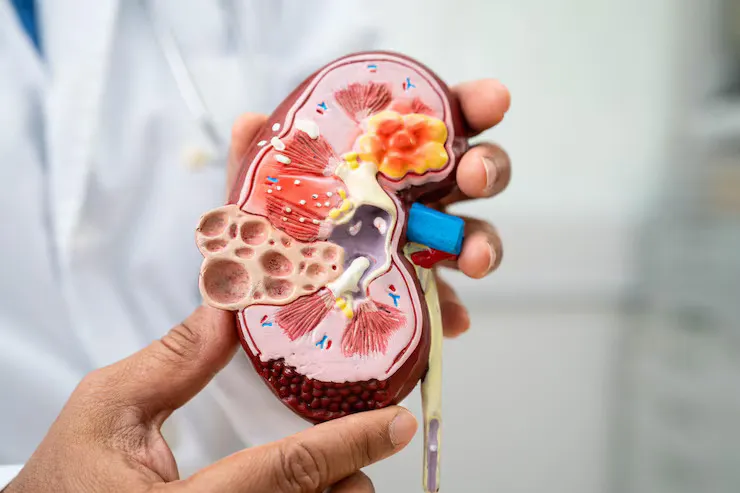
Exploring Endourology: A Minimally Invasive Approach to Urological Care
Advancements in medical technology have transformed the way many surgeries are performed today. One of the fields that have seen significant progress is urology, specifically through the subspecialty of endourology. This minimally invasive approach has revolutionized the treatment of various urological conditions, making procedures safer, faster, and more effective. But what exactly is endourology, and why is it important? Let’s dive into this fascinating area of medicine.
-
What is Endourology?
Endourology is a branch of urology that focuses on minimally invasive surgical techniques to treat conditions affecting the urinary tract. Unlike traditional open surgery, endourology utilizes specialized instruments that allow urologists to access the inside of the urinary system through natural openings or small incisions. These procedures are typically performed using endoscopes—thin, flexible tubes equipped with cameras and surgical tools—allowing surgeons to see and treat problems without large cuts or prolonged recovery times.
-
Conditions Treated by Endourology
Endourology is versatile and can be used to address a wide range of urological conditions, including :
- Kidney Stones : One of the most common conditions treated with endourology. Techniques such as ureteroscopy and percutaneous nephrolithotomy (PCNL) allow surgeons to locate and remove stones from the kidneys or ureters with minimal discomfort to the patient.
- Ureteral Strictures : Narrowing of the ureters can lead to blockage of urine flow, causing pain and potential kidney damage. Endourological techniques like balloon dilation or endoscopic incision help to open up the ureters and restore normal urine flow.
- Bladder Tumors : Early-stage bladder cancer can often be treated with endoscopic resection, where tumors are removed through the urethra using an endoscope.
- Prostate Surgery : For men with benign prostatic hyperplasia (BPH), or enlarged prostate, endourology offers procedures like Transurethral Resection of the Prostate (TURP), which alleviates symptoms by removing excess prostate tissue without the need for open surgery.
- Urinary Tract Obstructions : Whether caused by scar tissue, tumors, or congenital abnormalities, blockages in the urinary tract can be treated with minimally invasive endourological procedures.
-
Advantages of Endourology
The shift towards endourological procedures comes with numerous benefits for patients, including :
- Minimally Invasive : The hallmark of endourology is its minimally invasive nature. This means smaller incisions, less blood loss, and reduced trauma to surrounding tissues compared to traditional surgery.
- Faster Recovery : Because endourology involves less cutting and tissue disruption, patients typically experience shorter hospital stays, quicker recovery times, and a faster return to normal activities.
- Reduced Pain and Scarring : Smaller incisions and less tissue damage translate to less postoperative pain and minimal scarring. This is particularly important for cosmetic reasons and overall comfort during recovery.
- Lower Risk of Complications : Minimally invasive procedures tend to carry a lower risk of infection, bleeding, and other complications associated with more extensive surgeries.
- High Precision : With the aid of advanced imaging technology, endourology allows for highly precise surgical interventions, reducing the risk of damaging surrounding tissues and organs.
-
The Role of Technology in Endourology
The success of endourology is largely due to advancements in medical technology. Some of the key tools and techniques used in this field include :
- Endoscopes : These thin, flexible tubes come with cameras and specialized instruments that allow surgeons to see inside the urinary tract and perform procedures with pinpoint accuracy.
- Laser Technology : Lasers are frequently used in endourology to break down kidney stones, remove tumors, or cut through obstructive tissues with minimal bleeding and high precision.
- Robotic-Assisted Surgery : The use of robotic systems, such as the Da Vinci robotic system, in endourology allows surgeons to perform complex procedures with greater dexterity and control, leading to even better outcomes.
- Imaging Systems : Real-time imaging systems provide urologists with detailed visuals of the urinary tract during procedures, enhancing accuracy and minimizing risks.
-
The Future of Endourology
As technology continues to evolve, so does the field of endourology. The future holds exciting possibilities, such as even more advanced robotic systems, improved imaging techniques, and new methods for treating urological conditions with even less invasiveness. These advancements promise to further improve patient outcomes, reduce recovery times, and make urological care more accessible to those in need.
Conclusion
Endourology represents a significant leap forward in the treatment of urological conditions. By offering a minimally invasive alternative to traditional surgery, it provides patients with effective care while minimizing discomfort, recovery time, and the risk of complications. Whether you’re dealing with kidney stones, bladder tumors, or any other urological issue, endourology could be the solution that helps you get back to your normal life faster and with less pain.
If you’re experiencing urological symptoms or have been diagnosed with a condition that may require surgery, consult with a urologist who specializes in endourology. They can discuss your options and determine the best approach for your treatment.
